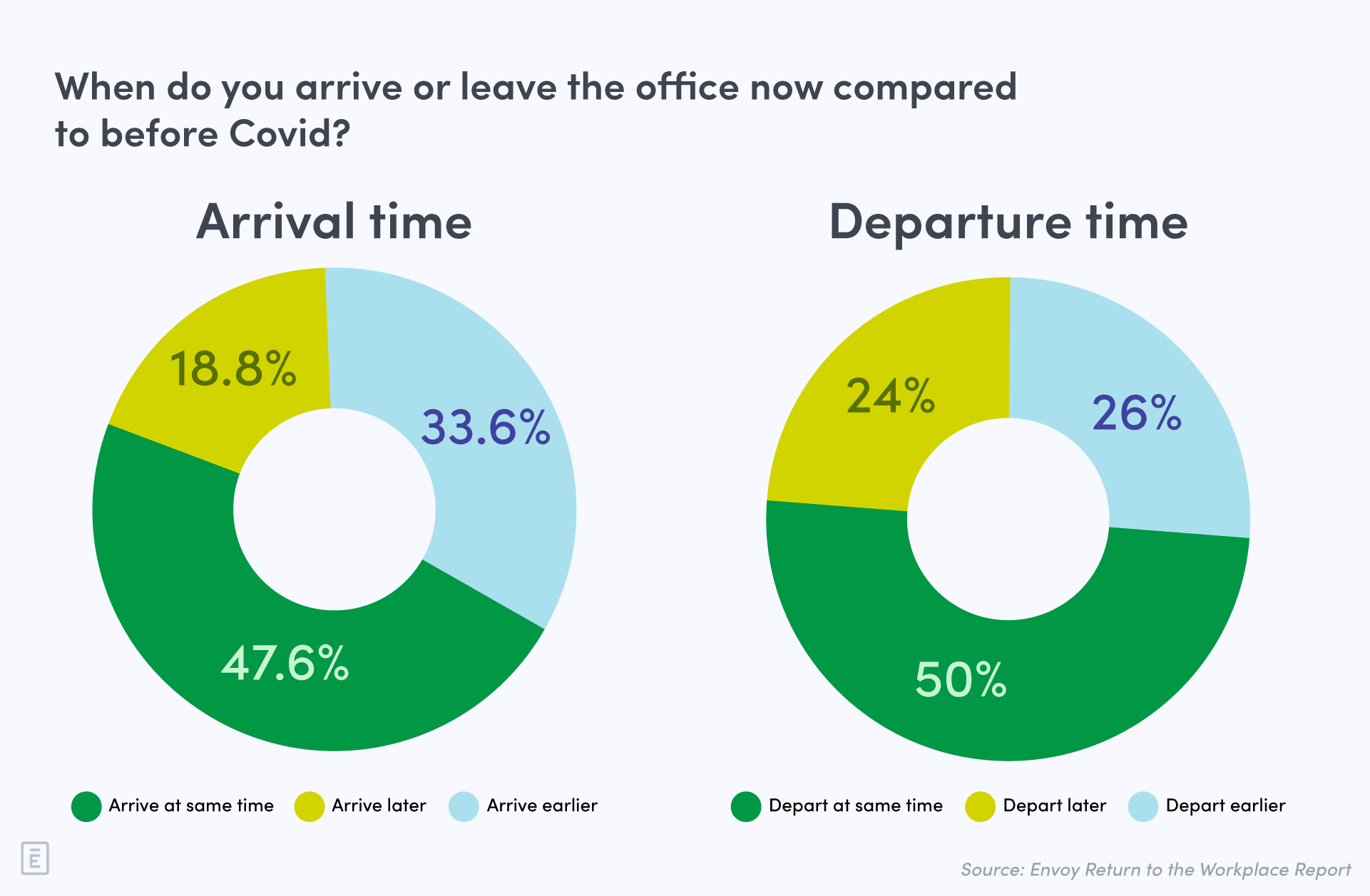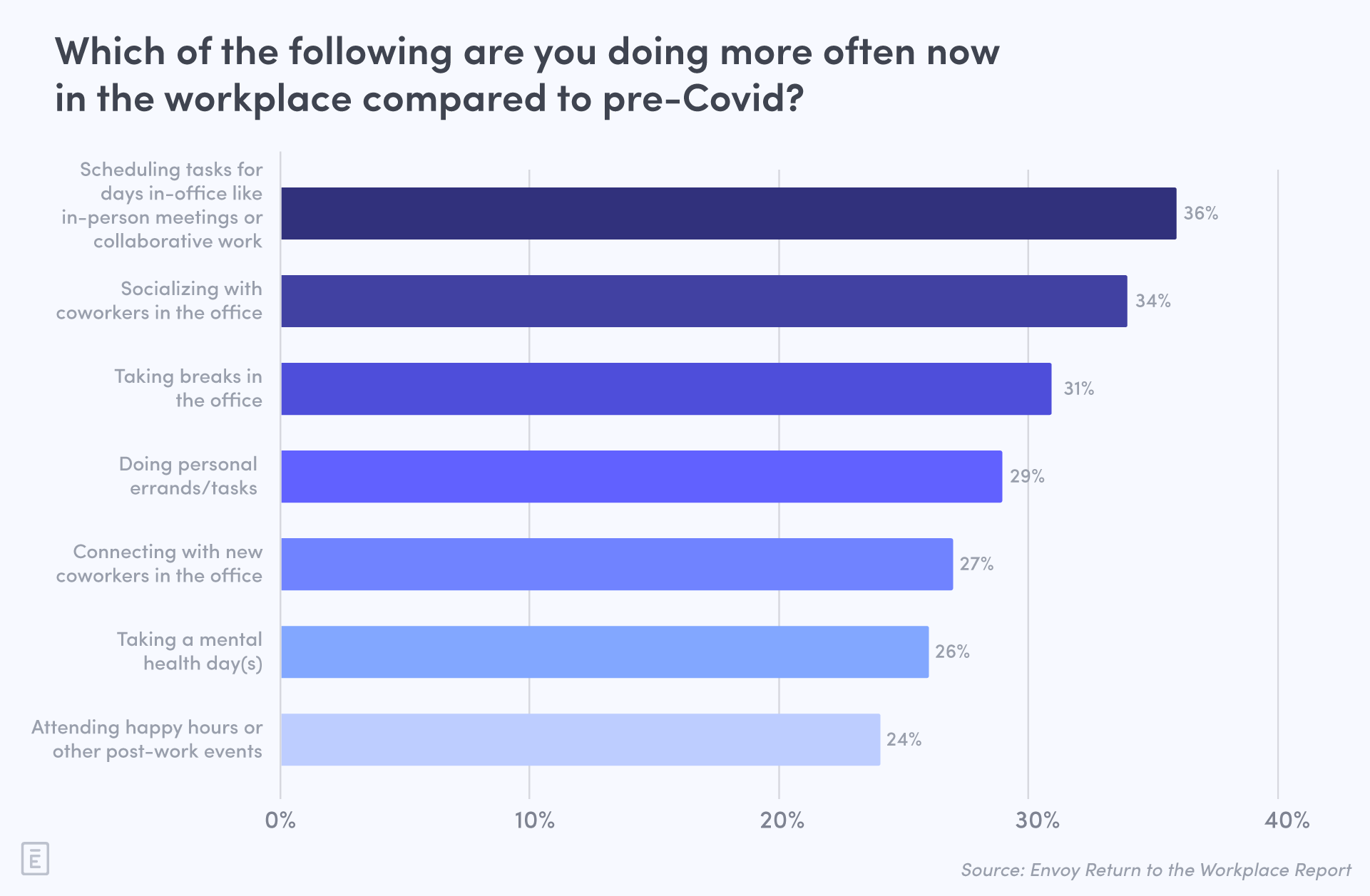
90% of employees say being back in-office is better than expected
The way we work, interact, and communicate in the workplace has been flipped on its head since the pandemic. And with the shift comes new workplace habits.
Employees are adopting new ways of working, refreshing old skills, and focusing on their well-being. They’re also reassessing how they spend their time in the workplace. Envoy’s latest Return to the Workplace report reveals which old routines people are setting aside in favour of new ones.
Here are the top ways behaviours and attitudes are shifting:
Employees are making the most of office life
- While many have wrestled with the decision to return, once onsite almost everyone (90%) surveyed says that being back is better than they expected.
- Even among those required to return, there’s consensus: 91% feel the office experience is better than they thought it would be – and 42% say that it truly exceeded their expectations.
- According to Envoy’s survey earlier this year, there’s a lot to gain by showing up. People are most excited to meet up with work friends, collaborate in-person, or just get out of the house.
Employees are changing up the old 9 to 5 schedule
- A little over half (52%) of employees have switched up their pre-pandemic commute to the office.
- Office hours have shifted earlier. Over a third (34%) are coming in earlier than they did before COVID and about a quarter (26%) are taking off earlier. Only 19% are coming in later compared to 24% who are staying later.
- New hires are staying longer at the office compared to pre-pandemic. For those that changed jobs during the pandemic (35%), 41% are arriving earlier and 31% are leaving later.
- In comparison, those returning to the same job are sticking to tried and true routines. 57% arrive and 60% leave the office at their usual pre-pandemic time. Only 30% are arriving earlier and 20% are leaving later.

Employees are re-learning top skills like time management
86% of those we surveyed are rebooting essential workplace skills that have gone dormant while working from home.
- Time management is number one at 40%. Meanwhile, 31% say they’re rusty when it comes to small talk and interacting with others.
- 29% are practicing in-person presentation skills.
- Picking out the right work outfit after two years of elastic waistbands also ranks high on the refresh list (29%).
- After so long communicating via video, 28% are re-learning how to maintain good body posture.
Employees are taking control of in-office work days
People are feeling more empowered to switch up the routine since the pandemic. Nearly all (93%) are planning their work days as they see fit. Many are blending in downtime in the form of personal breaks or social activity. Or, planning specific tasks for workplace days.
- 36% of employees say they’re reserving priority meetings and collaborative work for days onsite.
- Taking more breaks while at the office (31%) and running personal errands (29%) are priorities for nearly a third of employees – especially men. They’re more likely than women to take needed breaks during the workday or run personal errands.
- Mental well-being is also top of mind, especially for Gen Z. These younger workers are more inclined than any other generation to take a mental health day.
- Workers are also making more space in their schedules to socialise at the workplace – more so than before COVID. 34% are hanging out more with co-workers in the office. 27% are making the effort to meet new co-workers, and nearly a quarter (24%) are attending more happy hours or other post-work events.

“Folks want to get to know the people they work with. So the intention should be to bring people into the office on a few specific days so they can benefit from working together IRL,” said Larry Gadea, CEO and founder of Envoy.
“There’s a ton of value in being with people and generating ideas in-person. It’s what can inspire and motivate teams – and make that commute worthwhile. We need to be consistent and persistent when talking about this value of hybrid work.”

